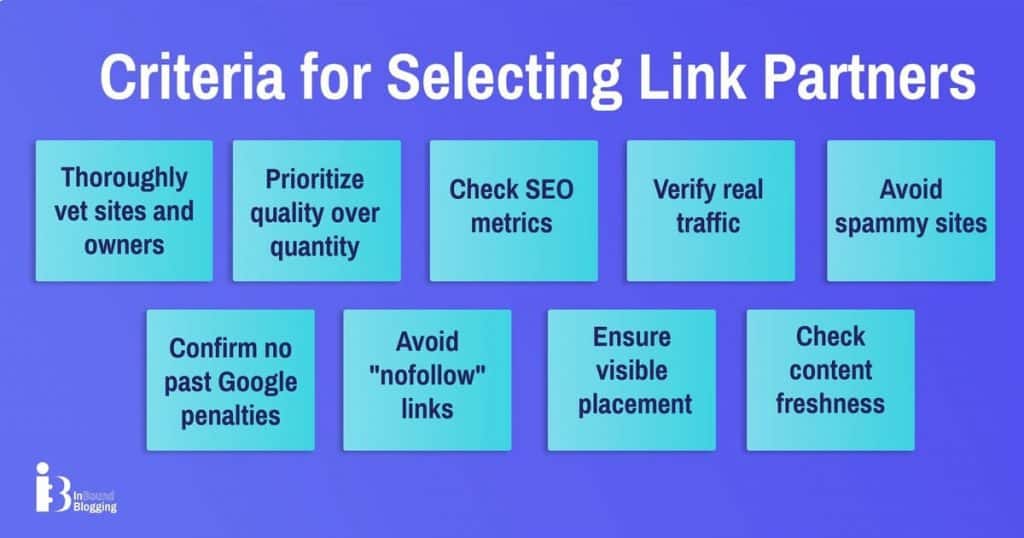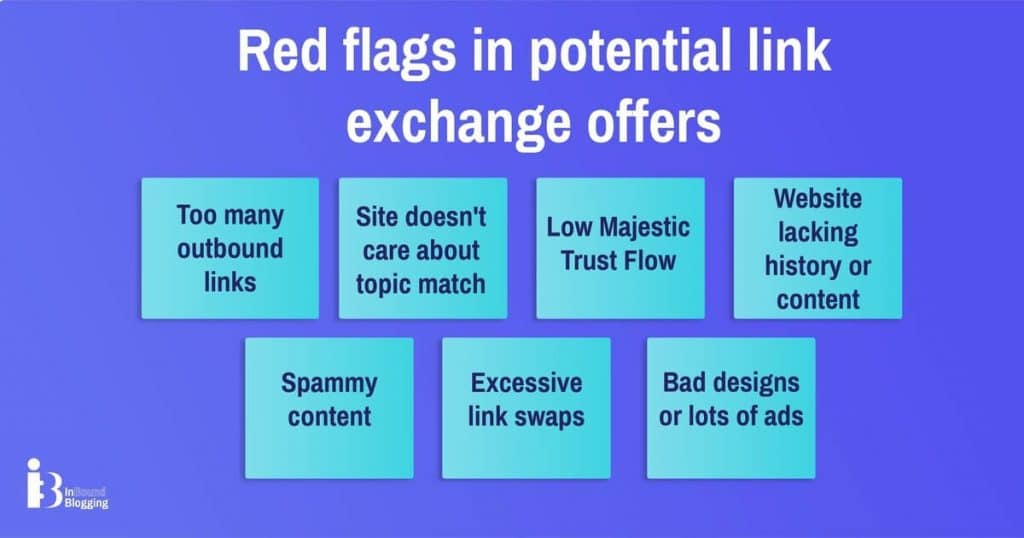Developing a legitimate search engine optimization (SEO) strategy can be challenging. If you don’t have deep knowledge of the best practices, the future of your website might not be bright.
There are some traps you need to be aware of. Not to mention the Google updates that can turn everything upside down in a matter of minutes. It’s a tricky but exciting road to walk down.
In this post, I’ll explore how trading backlinks could aid or impair your SEO endeavors.
Stick around for some enlightening insights you won’t want to overlook.
Backlinks Exchange [Key Takeaways]
- Trading links with other websites can help your site rank higher in 2024. Just be sure to swap links with quality sites that are related to yours.
- Google watches link exchanges closely. Too many traded links or swapping with the wrong sites can hurt your SEO efforts.
- There are safe ways to exchange links, like guest posting and working with influencers. These methods can boost your site’s visibility without breaking any rules.
- Picking the right partners for link swaps is important. Look for relevant, high-quality sites and avoid those that seem spammy or low-quality.
- Link exchanges should not be your only SEO strategy. Use them alongside other ways to get backlinks, like creating great content or using social media.
What Is Backlink Exchange?
Backlink exchange is a practice where two or more websites agree to link to each other in order to boost their search engine rankings. This mutual linking is intended to increase the authority and visibility of both sites in search engine results.
Does Google Approve Link Exchanges?
In short, Google says too many link swaps are bad. They have rules against it in their Webmaster Guidelines.
When done wrong, link exchange in SEO can do more harm than good. Here are some circumstances where link exchanges may damage your SEO efforts:
- Exchanging with low-quality websites can lower your site’s trust with search engines.
- Engaging in excessive link swaps leads to unnatural link patterns, which Google spots easily.
- Partnering with sites that are not relevant to your content confuses search algorithms about your site’s primary focus.
- The rapid increase in backlinks from these exchanges triggers alarms at Google for possible manipulation.
- Participation in reciprocal link schemes is seen as an attempt to trick search rankings.
Google has a hard time telling if a link swap is real or just for SEO purposes.
However, SpamBrain, Google’s AI-powered spam detection system, was released in December 2022. It’s designed to spot links built through black hat SEO tactics and link building software—solely for manipulating search engines. Sites caught doing this face Google penalties, meaning they can drop in search results or disappear from them entirely.
The key is to use link exchange for SEO at a moderate level. Keep the percentage of reciprocal links below 10–15% of your total backlink profile. Focus more on earning natural links through content syndication, content marketing methods, outreach, and other legitimate link building strategies.
Interesting fact #1: Did you know that using varied anchor text for backlinks can help avoid penalties for over-optimization and improve overall SEO performance? So, make sure you don’t use the same anchor over and over again.
Benefits and Risks
Engaging in link exchanges comes with both advantages and possible downsides. Let me summarize them for you:
Benefits
- Increases search engine rankings by increasing inbound links.
- Drives more visitors by tapping into partner sites’ audiences.
- Provides greater online visibility, making it easier for potential customers to find your site.
- Fosters relationships and collaboration opportunities with other website owners and businesses.
- Attracts targeted traffic, potentially leading to higher conversion rates and sales.
- Helps more people discover your content, increasing readership and sharing.
- Both parties benefit from mutual growth, expanding their reach and audience base.
Potential risks
- Search engines may penalize websites engaging in excessive or manipulative link exchanges.
- Links from low-quality or irrelevant sites can negatively impact your reputation and credibility.
- Finding suitable link exchange partners can be time-consuming.
- Poorly placed or irrelevant links can disrupt the user experience.
- Overuse of reciprocal links can reduce their effectiveness for SEO.
Types of Link Exchanges

Link exchanges have evolved into a nuanced component of SEO strategies. Today, I’ll break down the four common types that smart SEO experts consider.
- Private Influencer Networks (PIN): These networks consist of a partnership among websites aiming to boost each other’s reach and traffic. For instance, if my site focuses on tech reviews, I might join a PIN with other tech-oriented sites. We share links to increase our authority and online visibility.
- Reciprocal links: A reciprocal link exchange involves two sites agreeing to link back to each other. It’s a straightforward swap. I post your link on my blog, and you return the favor. The key here is relevance—my blog on digital marketing would exchange backlinks with another marketing blog, ensuring the content matches the interests of our audiences.
- Guest post swaps: Here, two website owners write posts for each other’s sites. It serves dual purposes: fresh content and new backlinks. You can write guest posts for friends’ business websites, and they can do the same for you. Your readers get valuable insights, and both sites can gain credible backlinks.
- Three-way link exchanges: A bit more complex, this involves three websites linking in a circle to avoid direct swaps, which can be easily detected by search engines as manipulative. Imagine that Site A links to Site B, Site B links to Site C, and Site C links back to Site A. Sharing link juice among all parties in this manner creates a loop that appears more natural.
Each type offers distinct advantages and must be chosen carefully based on your goals and the quality of potential exchange partners.
Interesting fact #2: There is one more way to exchange links with authoritative websites. The process is called HARO link building. It combines elements of both SEO and public relations (PR).
When to Consider a Link Exchange
Thinking about a link trade?
Check your site’s needs and the partner’s reliability first. Pick times when your website could use more visitors or when building connections in your field seems smart.
Criteria for selection

Choose your potential link partners carefully. Here are some tips to remember and checkboxes for you to check:
- Thoroughly vet sites and owners: Ensure their content aligns with your values by spending time studying their website. Check the website’s age as well. Sites that are at least a few years old are preferable to those that are brand new.
- Prioritize quality over quantity: Seek high-quality backlinks from authoritative sites rather than aiming for a large number of links.
- Check SEO metrics: Use SEO and link building tools like Ahrefs and Moz to evaluate the SEO health of potential partners, their backlink profiles, audience relevance, etc. Ahrefs’ proprietary metric is domain rating (DR), while Moz’s is named domain authority (DA). The higher these are, the better.
- Verify real traffic: Look for websites with real visitors to increase the chances of them clicking on your link. These sites should have at least 5,000 organic monthly visits.
- Avoid spammy sites: Steer clear of sites involved in excessive link exchanges or link farms. Google dislikes these. Furthermore, if a page has too many external links, your link has to share the link juice with them. Therefore, your backlinks become less valuable.
- Confirm no past Google penalties: Ensure your link exchange partners haven’t had penalties that could negatively impact your SEO.
- Avoid “nofollow” links: Ensure the link to your site will not have a “nofollow” attribute unless strategically decided on.
- Ensure visible placement: Confirm your link will be placed in a visible spot on their website.
- Check content freshness: Evaluate how often they update their content, as fresh content indicates an active site that Google favors.
Situations favorable for link exchanges
It’s essential to pick the right moments for these swaps to maximize benefits. Here’s when you should think about backlink exchanges:
- When you find websites in your niche: The best exchanges happen between sites that share topics. If you run a photography blog, link up with other photo sites. They shouldn’t be your direct competitors, though.
- Both sites offer high-quality content: It’s not just about the link. It’s in the company you keep. Make sure their articles or services match up to your standards.
- Your potential partner has a similar or slightly higher domain authority: It keeps the exchange fair and beneficial.
- There’s an opportunity for reciprocal growth: Both sites should see value beyond just links—like shared audiences.
- You’re launching new products or features and want targeted visibility: Getting mentioned on relevant websites draws in interested viewers.
- Both of you have active social media profiles: There, these shared links can be promoted further, extending reach beyond direct clicks.
- The timing is strategic: For instance, linking up before major industry events can boost attention when it matters most.
Would you like to learn more about the intricacies of link exchanges, based on your niche? Check out my guide to mastering SaaS link building.
When to Avoid Link Exchanges
Sometimes, we need to step back and not jump at every link exchange opportunity that comes our way. If a site looks shady or doesn’t match our niche, it’s time to walk away.
Red flags in potential link exchange offers

I see a lot of link exchange requests. Some are good; some wave red flags the moment you see them. Here are the red flags that scream “stay away.”
- The site wants to exchange links but has too many outbound links already. This dilutes value.
- They don’t care about relevance. If our topics don’t match, it’s a no-go.
- Their Majestic Trust Flow is low, showing they’re not trusted much on the web.
- The offer comes from a new website lacking history or content—too risky.
- You spot spammy content on their pages. It means they’re not serious about quality.
- They propose excessive link swaps, making it clear they engage in risky SEO tactics.
- Sites with bad designs or lots of ads can harm your reputation by association.
Avoiding these pitfalls helps keep my SEO strategy safe and effective.
Backlink Exchange in 2024: Real-Life Examples
Here, I’ve gathered the stories of five industry experts who shared how link building has affected their SEO performance in 2024.
1. Careful exchanges improve SEO rankings
“In 2024, opinions on using link exchanges for SEO vary widely. While many SEO experts advise against it, I’ve seen firsthand how carefully chosen exchanges can boost SEO.
For instance, in recent campaigns, we exchanged links with a related business in our industry. This mutual agreement to link to each other’s valuable content helped us both gain stronger backlinks. As a result, our SEO rankings improved for key search terms, and we saw an increase in organic traffic.” — Simon Brisk, Founder and SEO Strategist, Click Intelligence
2. Judicious link exchanges yield organic traffic growth
“In a recent campaign for an eco-friendly product brand, we engaged in a strategic link exchange with a well-known sustainability blog. Both parties created valuable content, highlighting each other’s initiatives and products. This collaboration led to a series of high-quality backlinks from both sites, which were contextually relevant and offered value to readers. As a result, our client saw a 25% increase in organic traffic over two months and improved search engine rankings for key eco-friendly product-related terms.” — Omer Lewinsohn, General Manager and Marketing Expert, Management.org
3. Meaningful link exchanges add SEO value
“We recently partnered with a complementary industry blog for a link exchange. Both sites offered valuable, relevant content to each other’s audiences. This boosted referral traffic and improved our domain authority. Within two months, we saw a 25% increase in our rankings for targeted keywords. The key is ensuring exchanges are meaningful and add value to both parties involved.” — Bhavik Sarkhedi, CMO, Write Right
4. Local SEO benefits from strategic link exchanges
“In 2024, I concentrated on building link exchanges with local businesses, industry directories, and regional publications. This strategy helped us establish a strong local online presence, improving our visibility in local search results. The links from reputable local sites boosted our domain authority and relevance for local search queries.
Additionally, these local partnerships brought in geographically targeted traffic, which was highly relevant and likely to convert. Our local SEO efforts resulted in increased foot traffic to our physical locations and higher engagement from local customers.” — Tom Golubovich, Head of Marketing, Ninja Transfers
5. Relevant exchanges enhance user experience
“Our campaign for a client’s e-commerce site made us partner with complementary but non-competing businesses. By exchanging links with a popular blog in their niche, we saw noticeable growth in referral traffic and improved domain authority. This collaboration also provided users with valuable resources, improving both sites’ overall credibility and reach.” — Marcus Clarke, Owner, Searchant
Conclusion
Backlink exchange still works in 2024. We see thousands doing it, from small blogs to big websites with lots of visits every month. Google says okay to normal link swaps. It’s about being smart, picking partners wisely, and focusing on relevant links.
Eager to learn more about SEO links? Check out my article about manual link building.



